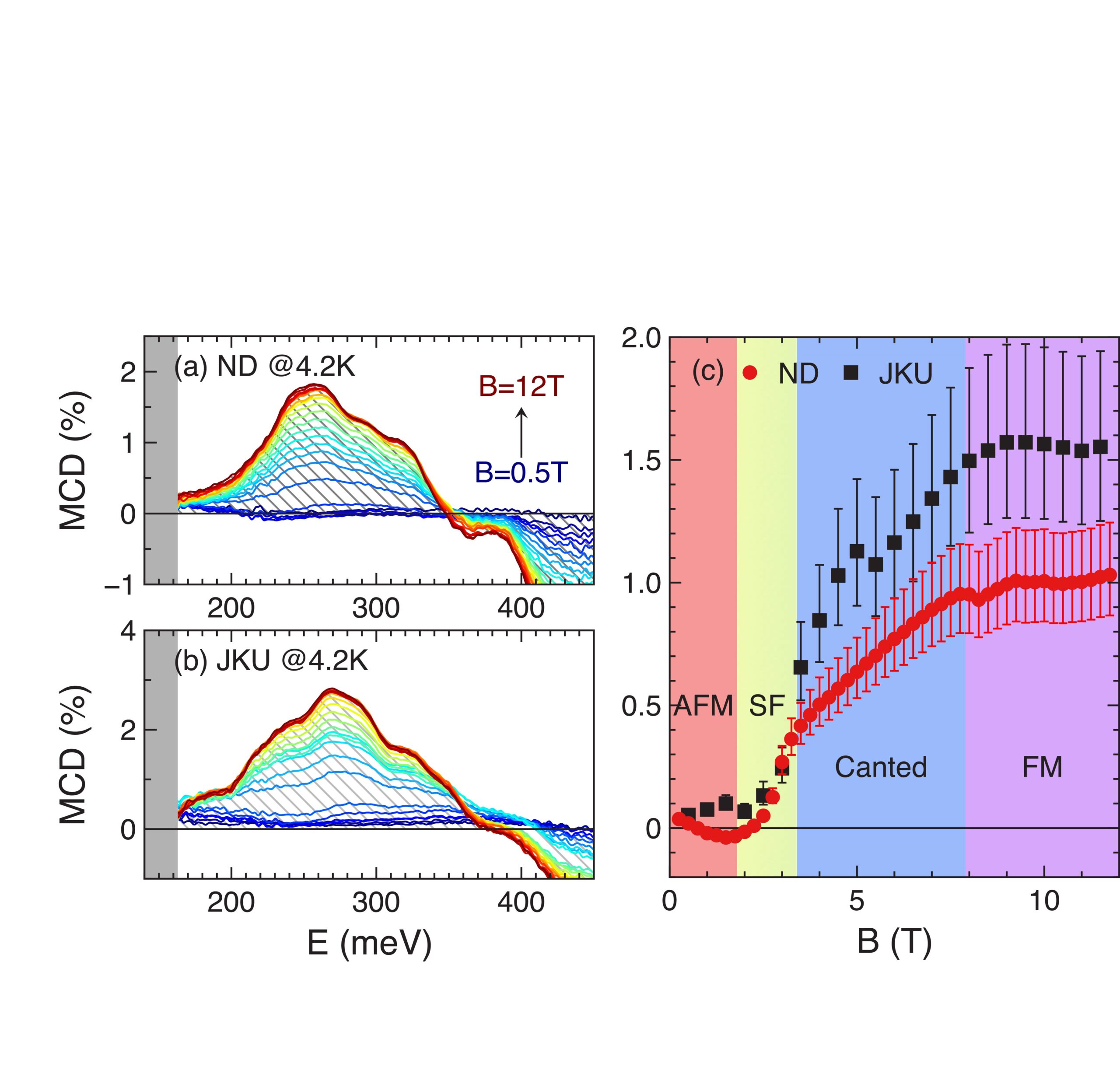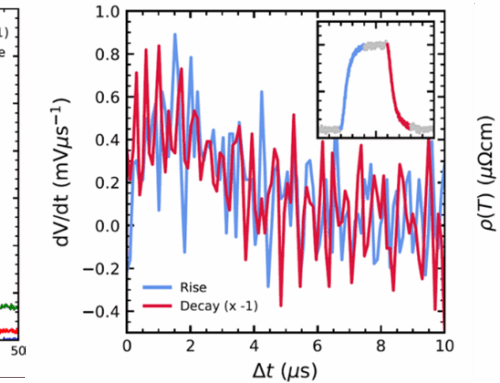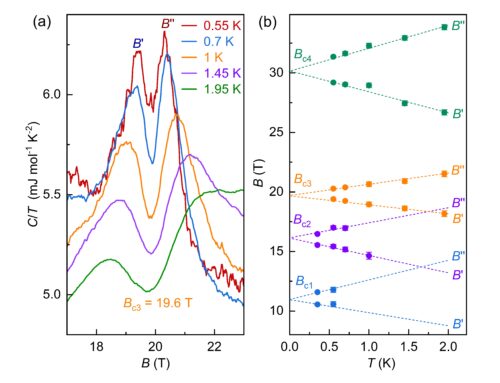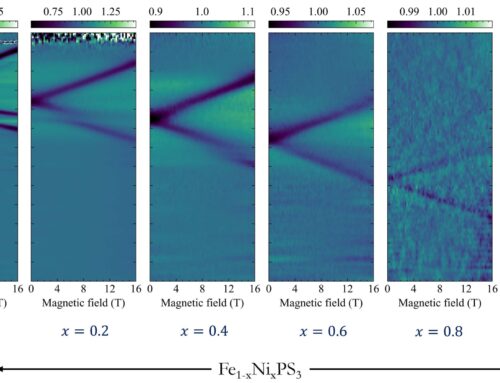Badih Assaf, University of Notre Dame, USA, Milan Orlita, LNCMI-Grenoble.
Magnetic circular dichroism (MCD) is a widely known phenomenon with a long history in physics that dates back to the original experiments carried out by Faraday, dealing with the interaction of light with matter subjected to an externally applied magnetic field. It refers to preferential absorption of one of two circular polarizations of light propagating in the direction of the magnetic field. In solids, MCD often arises as a direct consequence of the Zeeman splitting of electronic bands. However, it can also originate purely from orbital effects, such as the cyclotron motion of electrons.
Recently, a broad consortium of researchers from USA, Austria, Belgium, and France performed infrared MCD studies on thin bulk layers of MnBi2Te4. This material had previously been identified as the very first experimentally realized intrinsic antiferromagnetic topological insulator, characterized by a significant exchangedriven gap in its surface states. Moreover, MnBi2Te4 may host a diverse range of magnetic and topological phases, depending on specific parameters such as strain, layer thickness, and applied magnetic field. As a result, MnBi2Te4 has emerged as a platform for experimentally exploring intriguing theoretical predictions for this class of materials, including the quantum anomalous Hall effect and the axion insulator phase.
In this study, the team investigated MCD in thin MnBi2Te4 films at low temperatures within the infrared spectral range, around the absorption edge for interband transitions that bring electrons across the bulk band gap. The MCD signal, absent at low magnetic fields in the antiferromagnetic state of MnBi2Te4, emerged during the magnetic-field-driven phase transition to the canted ferromagnetic state (figure). This observation was attributed to the abrupt onset of Berry curvature as MnBi2Te4 transitions from an antiferromagnetic topological insulator to a doped Chern insulator. These findings highlight the potential of MCD as an effective probe for exploring Berry curvature in other emerging magnetic topological materials.

Figure: MCD signal for two different MnBi2Te4 samples [(a) “ND” and (b) “JKU”] as a function of energy for selected magnetic fields. (c) Spectrally integrated MCD signal for both samples as a function of magnetic field in antiferromagnetic (AFM), spin-flop (SF), canted, and ferromagnetic (FM) phases.
Probing Berry curvature in magnetic topological insulators through resonant infrared magnetic circular dichroism, S.-K. Bac, F. Le Mardelé, J. Wang, M. Ozerov, K. Yoshimura, I. Mohelský, X. Sun, B. A. Piot, S. Wimmer, A. Ney, T. Orlova, M. Zhukovskyi, G. Bauer, G. Springholz, X. Liu, M. Orlita, K. Park, Y.-T. Hsu, and B. A. Assaf, Phys. Rev. Lett. 134, 016601 (2025).
https://journals.aps.org/prl/abstract/10.1103/PhysRevLett.134.016601
Contact: bassaf@nd.edu, milan.orlita@lncmi.cnrs.fr






